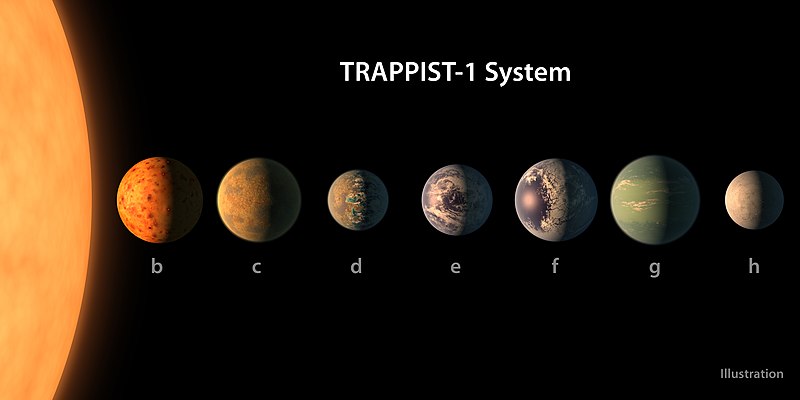Fitxer:PIA21422 - TRAPPIST-1 Planet Lineup, Figure 1.jpg

Mida d'aquesta previsualització: 800 × 400 píxels. Altres resolucions: 320 × 160 píxels | 640 × 320 píxels | 1.024 × 512 píxels | 1.280 × 640 píxels | 2.560 × 1.280 píxels | 6.000 × 3.000 píxels.
Fitxer original (6.000 × 3.000 píxels, mida del fitxer: 2,63 Mo, tipus MIME: image/jpeg)
Historial del fitxer
Cliqueu una data/hora per veure el fitxer tal com era aleshores.
| Data/hora | Miniatura | Dimensions | Usuari/a | Comentari | |
|---|---|---|---|---|---|
| actual | 20:39, 22 feb 2017 |  | 6.000 × 3.000 (2,63 Mo) | PhilipTerryGraham | User created page with UploadWizard |
Ús del fitxer
La pàgina següent utilitza aquest fitxer:
Ús global del fitxer
Utilització d'aquest fitxer en altres wikis:
- Utilització a af.wikipedia.org
- Utilització a ar.wikipedia.org
- Utilització a bn.wikipedia.org
- Utilització a el.wikipedia.org
- Utilització a en.wikipedia.org
- Utilització a es.wikipedia.org
- Utilització a et.wikipedia.org
- Utilització a fi.wikipedia.org
- Utilització a fi.wikibooks.org
- Utilització a glk.wikipedia.org
- Utilització a id.wikipedia.org
- Utilització a ja.wikipedia.org
- Utilització a ku.wikipedia.org
- Utilització a lt.wikipedia.org
- Utilització a ms.wikipedia.org
- Utilització a my.wikipedia.org
- Utilització a nl.wikipedia.org
- Utilització a pnb.wikipedia.org
- Utilització a pt.wikipedia.org
- Utilització a ro.wikipedia.org
- Utilització a tl.wikipedia.org
- Utilització a tr.wikipedia.org
- Utilització a uk.wikipedia.org
- Utilització a ur.wikipedia.org
- Utilització a vi.wikipedia.org




